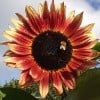How to use garden herbs for home remedies, and how to make herbal tea
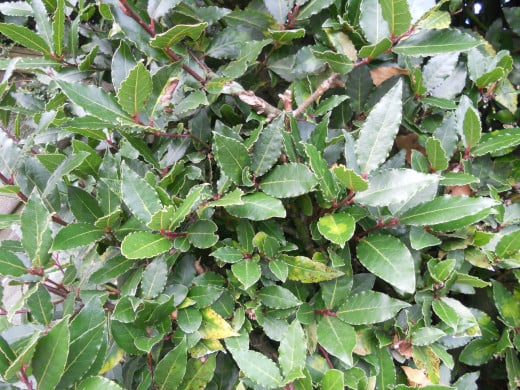
Garden herbs can be useful for more than just adding flavour to your food, many of them are also known for their medicinal properties, and there are some simple remedies that you can easily make at home for minor ailments. Many people have a small herb bed in their gardens, or perhaps some herbs in pots, and even if you don't have a garden many of these herbs can be grown in small pots on a sunny kitchen windowsill.
Bay
Bay leaves from the evergreen laurel or bay tree (Laurus nobilis) have been used medicinally at least since the times of the ancient Greeks and Romans, who held it in very high regard as both a symbol of peace and wisdom and for its many medicinal applications. It has astringent, antiseptic and stomach soothing properties, and is also said to induce menstruation and childbirth in women - so it is best avoided if you are pregnant. Culpeper's Complete Herbal also claims that a bay tree can protect you against evil witchcraft!
A tea made from the dried leaves can help to expel wind and soothe stomach aches, and is also thought to help with colds, rheumatic pains and in clearing congestion. See notes at the end for a guide to making herbal teas. You can add a little honey to this tea to make it more soothing and palatable.
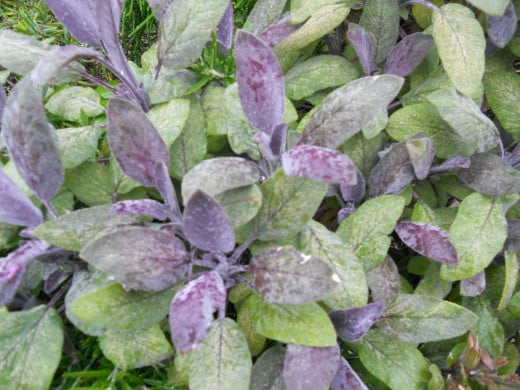
Sage
Sage (Salvia officinalis) has many uses, but is mainly known for its antiseptic properties. A strong tea made from the leaves, and used as a mouthwash can help to soothe mouth ulcers, sore gums, sore throats and respiratory infections. Simply chewing a leaf and then rinsing with your mouth out with water is also a quick way to help with mouth infections or sores. Poultices made from the leaves can be used as an antiseptic treatment for cuts and sores on the skin.
Sage tea is also beneficial to the digestive system and can help with flatulence and intestinal cramps. It is also said to promote longevity and aid memory, and some recent research has indicated a possible use in helping to prevent Alzeimers.
The picture above shows the purple variety, which is a more ornamental shrub, but it does have the same properties as the more common green leaved variety.
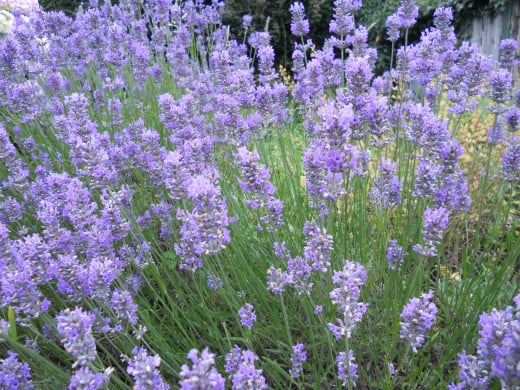
Lavender
The delicately aromatic lavender (Lavandula spica) gets its name from the French word "laver" which means "to wash", as lavender was often used in laundering clothes to soften the water and to make the laundry sweet scented.
The tradition of lavender bags (cloth bags filled with dried lavender) is still used to keep clothes and linen smelling clean and fresh when stored in drawers.
Lavender is usually used medicinally in the form of lavender oil, which can be used topically on the forehead or temples to ease headaches and relieve stress. It has a calming and soothing influence, which can also be attained simply by picking a handful of flowers, crushing them and inhaling the fragrance.
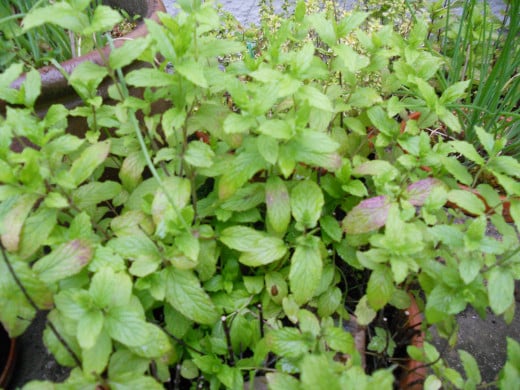
Mint
Common or garden mint (Mentha viridis) is another soothing herb, and the fragrance from the crushed leaves or distilled oil can be used to soothe headaches and help to clear blocked noses. A mint tea can also help with various respiratory and digestive ailments.
Peppermint (Mentha piperita) is more commonly used as a tea, and is one of the best herbal teas for soothing stomach complaints such as indigestion, nausea or trapped wind. A mild infusion can be used as a gripe water to help with colic in young children. It is usually recommended that pregnant women avoid peppermint tea, as it is a mild stimulant.
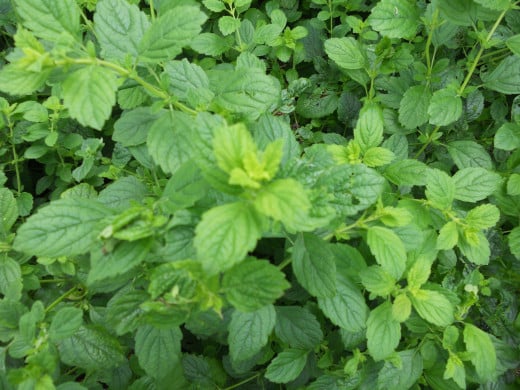
Lemon balm
Lemon balm (Melissa officinalis) has the most refreshing smell, and simply picking a few leaves to inhale the fragrance is uplifting, reviving and can combat feelings of depression and nausea. Tea made from the leaves is said to have anti-viral properties, and is also useful in relieving the symptoms of colds.
Try using a fresh lemon balm leaf to relieve itchy mosquito bites or wasp stings.
A note on making herbal teas
A general guide to quantities for making herbal teas is to use one tablespoon of dried herbs or two tablespoons of fresh herbs to each cup of water. You can vary this according to your own tastes or requirements.
Use a china or glass teapot, pour freshly boiled water directly onto the herbs, leave to brew for at least 5 minutes, then strain and serve. It can also be served chilled, or used topically, for instance when using sage leaf tea as an antiseptic mouthwash or cleanser.
